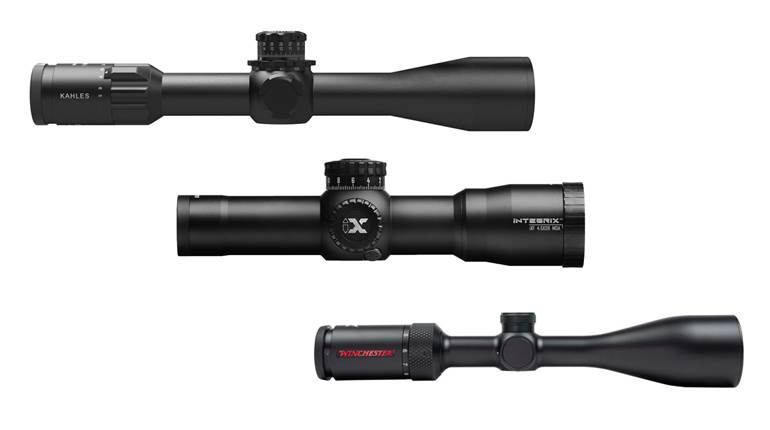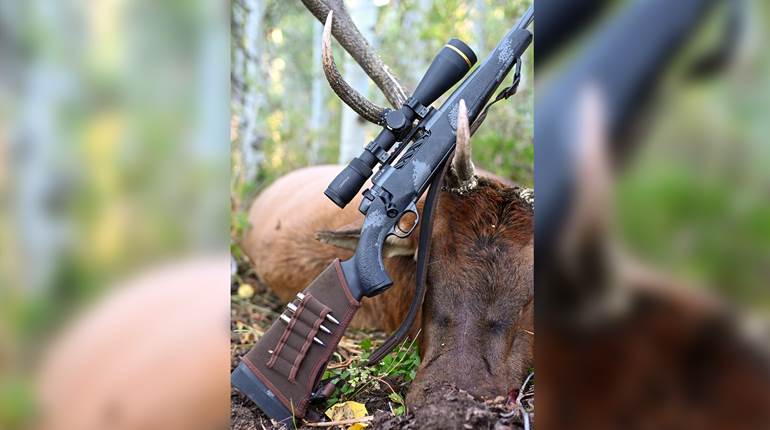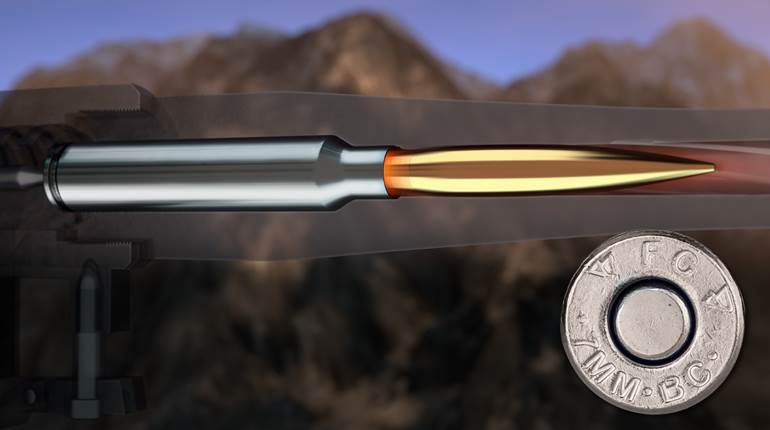
The latest binocular from Leica reveals much about how the optics market is changing to keep pace with the current-day shooting culture. Despite containing a significant new development in optical glass-an ingenious hybrid prism-the buzz from early observers centers on the Geovid HD-B’s electronic components that should prove particularly useful to long-range shooters and hunters.
In addition to a laser rangefinder, the new bino offers an onboard ballistics computer, inclinometer (measures angle of slope) and digital thermometer/barometer, all of which are integrated to provide shooting solutions to circumstances at hand.
The heart of any binocular is its prisms and two types have dominated, the older Porro style and the now-popular roof prism. Though you never actually see them, it’s easy to deduce the prisms inside from the binocular’s shape. The stair-step look means it’s a Porro, while straight barrels indicate roof prisms. Advances to the latter over the past 20 years have evened optimum performance expectations, but there still are distinct differences. The roof designs are handier, lighter and more durable. But for equal performance-magnification, brightness, clarity and field of view-Porros are less costly.
And so based on its shape, the HD-B is more like a roof-prism but distinctively bowed at mid-barrel because it in fact contains the breakthrough Perger Porro. Like other Porro systems, this one creates fewer internal reflections than roof prisms, and thus fewer chances for light to be “lost” or degraded. However, the redesigned Perger prisms form an elongated shape from which the entering and exiting optical axes are moved closer together, thus reducing the offset that caused previous Porro models to have a clunky profile.
I carried a Geovid HD-B 10x42 during spring turkey season in order to gauge its durability and handling. The unit’s rubber-encased magnesium housing is lightweight but very tough, and despite the electronics Leica guarantees waterproofing to 5 meters. Accordingly, I allowed the bino to get drenched in rain, then dunked it in a bucket and placed it in a freezer-all without effect. As intended, the Leica deployed as easily as any 10x42 roof-prism and much less awkwardly than the standard Porro. At 34.5 ounces, it is hefty, but comparable to other rangefinding models. The open-bridge design promotes comfortable grip during long glassing sessions.
Rangefinding binoculars have come a long way since Leica pioneered the category with the original Geovid in 1992. Effective range and speed are much greater, and there are fewer misreadings. Leica says the HD-B is “rated” to 2,000 yards, with readings in as little as .3 second. This is not the only optic rated to that extreme distance, but the only one I have tested that yielded a reading exceeding it, which came from a silver-painted water tank at 2,095 yards. In more relevant use, I obtained the following maximum readings: rock formation, 1,742 yards; round bale of straw, 1,594 yards; whitetail deer, 1,388 yards; and black bear, 1,337 yards. Readouts appear as a bright red display visible in all light conditions and are controlled via two large buttons on the rear right-hand bridge.
The same display mode delivers the ballistic information, and users have more options here than with any other RF optic. Along with the standard holdover in inches, owners can receive corrections in ¼-MOA clicks. The internal “hard drive” contains 12 ballistic curves to match up with nearly any load, translated in European (meters/centimeters) or U.S. (yards/inches) increments. Users can further modify each curve to three zeroing ranges. Or if the user prefers, he can download his custom ballistic curve via a micro SD card inserted through the battery compartment. We spot-checked the system by comparing it on paper with various loads including: “US1” curve-.300 WSM with Federal Premium 130-grain TTSX zeroed at 200 yards. The recommended holdover at 400 yards was 14 inches or 13 clicks of elevation adjustment. At the range, actual hits (center of 10 shots) struck 12.5 inches lower than point of aim from a 24-inch-barreled Kimber M8400 and 1.5-inch low after adjustments.
"Alternate Ballistics Curve” (downloaded from micro SD card)-.405 Win. with Hornady 300-grain FP zeroed at 100 yards. The recommended holdover at 275 yards was 23 inches. Actual hits from a 22-inch-barreled Ruger No. 1 centered 27.5 inches low.
These results are in keeping with other ballistic compensation devices, and while relatively close to the system’s ballistics calculations, I agree with Leica’s advice that the values should be used as a beginning reference only and subsequently verified on real targets.
Because of geography, we were not able to review all of the HD-B’s ballistic services. Notably missing was a meaningful test of the inclinometer or what Leica calls “equivalent horizontal range.” By noting the angle to the intended target, it provides a corrected range value based on the calculated horizontal path, while also factoring in the chosen ballistics curve and temperature and atmospheric pressure values. For long-range hunters and shooters operating in mountain terrain, these factors can be critical, and I know of no better solution.
Anyone who can follow directions and use a smartphone should be able to employ the HD-B’s many functions. But with just two control buttons, only the exact lengthy sequence will produce the desired result, and any misstep may mean restarting the process. Programming a custom ballistic curve onto a micro SD card is done through a portal at Leica’s website, and though its directions are good, this exercise may require trial and error.
Image quality from the HD-B must be seen to be fully appreciated. Nearly without exception, folks using our test unit vowed it the best ever encountered.
In an effort to quantify the HD-B’s capabilities, I conducted two tests. To measure low-light transmission, we observed from 100 yards how long after sunset a soccer ball’s black and white sections (1.72 square inches) remained distinct. The very best binoculars I have used typically come in at 45 minutes, and the Leica was right there. Later I tested for sharpness by enlisting three volunteers to read headlines like the one on this page at maximum distance. The average was 81 yards, which edged out a couple top European competitors and eclipsed other models by about 10 percent.
Leica touts the 3-D effect of images delivered by its Perger Porro prisms, but of greater practicality to hunters is the resulting increased field of view (FOV), 342 feet at 1,000 yards for the 10x42 version. Except for a few holdout Porro models, FOV from the rest of the pack tops out around 330 feet.
“We felt like we needed a game changer,” announced Leica marketing exec Terry Moore during a press unveiling at the 2013 SHOT Show. “And this is it.”
In fact, the “game” has been changing for the past decade as a growing number of shooters seriously embraces long-range field marksmanship. In that arena, the Geovid HD-B has no peer as a versatile and capable instrument for both imaging and use as a ballistic resource.
Type: Perger Porro-prism rangefinding ballistics-compensating binocular
Magnification: 8X, 10X (tested)
Objective Lens Diameter: 42 mm
Focusing Range: 16.5'-infinity
Eye Relief: 20 mm
Exit Pupil: 4.2 mm
Field of View @ 1,000 yds: 342'
Coatings: HDC multi-layers, AquaDura
Dimensions: length 6.8"; weight 34.5 ozs.
Construction: magnesium body, black rubber armor
Accessories: lens caps, case, neck strap, micro SD memory card
MSRP: $2,995





































